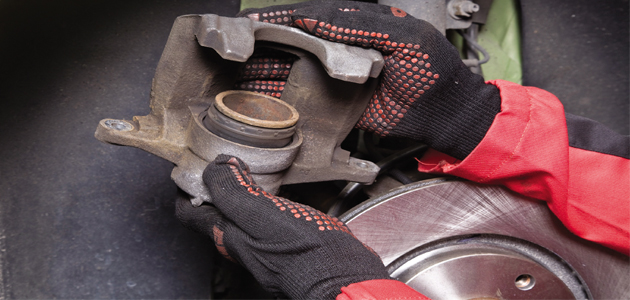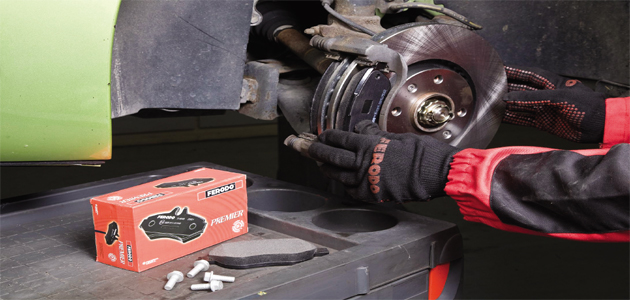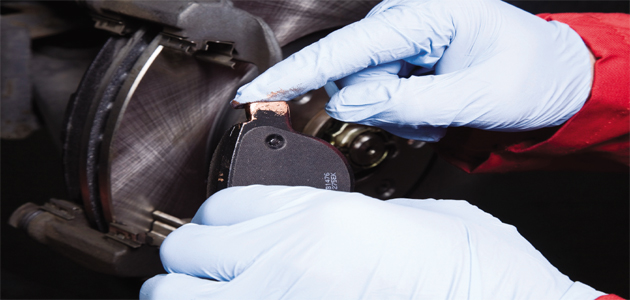
Ferodo’s garage research confirms that brake noise is one of the most common reasons for customers to bring their cars back for rectification. Here we show some of the key steps involved with avoiding brake noise when fitting and removing brake pads and calipers.
1. Strip and clean all the caliper slides and pins.
2. Emery paper can only be used on the caliper and pad abutments in the case of heavy rust or pollutants. Note: if the caliper is not sliding easily, this can result in tapered pads or uneven wear within the axle, which creates squeal and judder.
3. The pins must have the correct lubrication to ensure free movement so that the pin does not seize into the caliper body. Also, check the condition of the slide pin rubber boots to stop water ingress. Note: if the pins are not lubricated they may seize, causing wear taper and noise issues.
4. Check for free piston movement, and retract the piston fully – this is essential to avoid damage to the shim or the rubber coat.

5. Check that the brake pads fit freely and easily into the caliper brackets.

6. Clear burrs off the brake pad edges if required. Note: if the pad is not moving freely inside the brackets, there will be ongoing contact with the discs, causing squealing as well as tapered pads or uneven wear within the axle.

7. In certain cases (e.g. an old, rusted caliper), it is a good idea to lightly lubricate the contact points between the metal back plate and slides with copper grease, according to the vehicle manufacturer’s instructions. Note: take care that NO grease touches the friction material.
8. Insert wear indicators, when appropriate, in or on the brake pads. Screw in the caliper fixing-bolts. Replace the thread-lock bolts with new ones.
9. Follow the correct tightening torque and sequence recommendations. With the brake caliper reassembled, pump the brake pedal until the stroke is around one third of the full stroke potential. Check that the brake operates correctly, including pad retraction. Refit the road wheel. If there is free rotation, the vehicle is ready to go back on the road. Note: do a road test before returning the vehicle to make sure that the brake system is in full working order. When you return the car to the driver, advise them on the correct bedding-in procedure to ensure proper brake efficiency.









